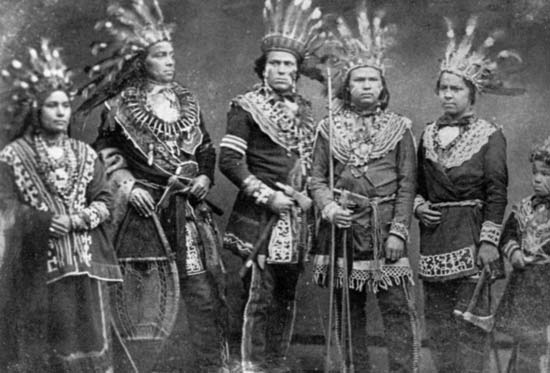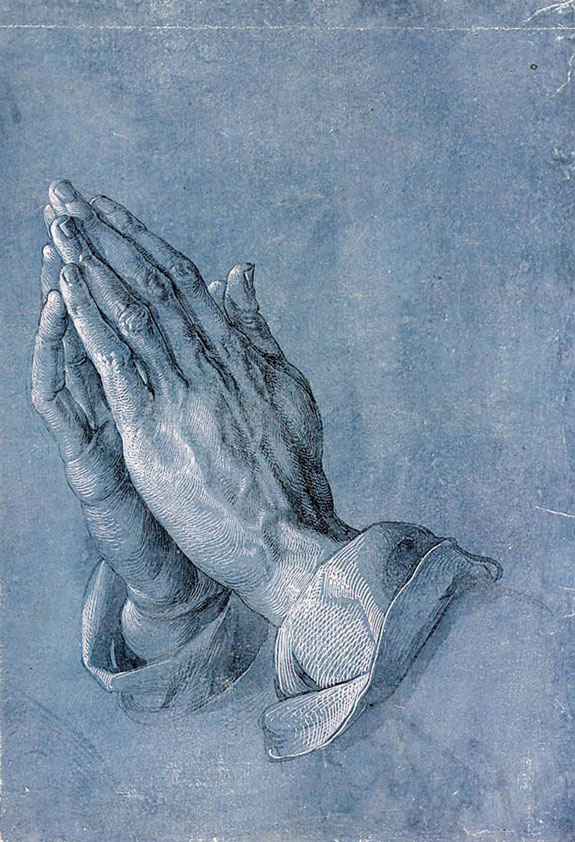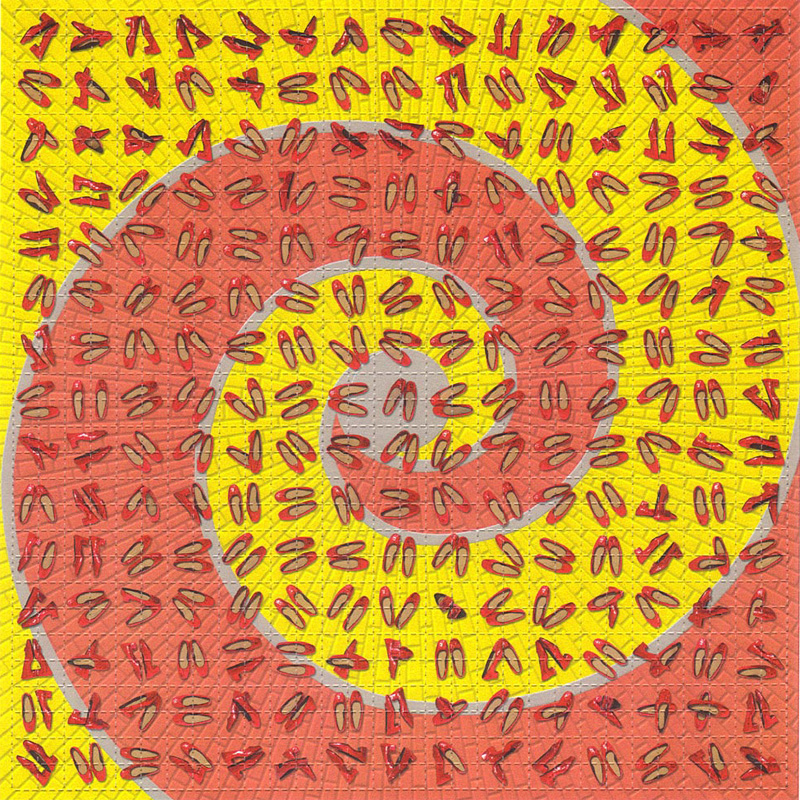|
Manitou
Manitou (), akin to the Iroquois '' orenda'', is the spiritual and fundamental life force among Algonquian groups in the Native American theology. It is omnipresent and manifests everywhere: organisms, the environment, events, etc. ''Aashaa monetoo'' means "good spirit," while ''otshee monetoo'' means "bad spirit." When the world was created, the Great Spirit, ''Aasha Monetoo'', gave the land to the indigenous peoples, the Shawnee in particular. Overview The term ''manitou'' was already in widespread use at the time of early European contact. In 1585, when Thomas Harriot recorded the first glossary of an Algonquian language, Roanoke (Pamlico), he included the word ''mantóac'', meaning "gods" (plural). Similar terms are found in nearly all of the Algonquian languages. In some Algonquian traditions, ''Gitche Manitou'' refers to a "great spirit" or supreme being. The term has analogues dating to before European contact, and the word uses of ''gitche'' and ''manitou'' themse ... [...More Info...] [...Related Items...] OR: [Wikipedia] [Google] [Baidu] |
Gitche Manitou
Gitche Manitou (Gitchi Manitou, Kitchi Manitou, etc.) means " Great Spirit" in several Algonquian languages. Christian missionaries have translated '' God'' as ''Gitche Manitou'' in scriptures and prayers in the Algonquian languages. '' Manitou'' is a common Algonquian term for spirit, mystery, or deity. Native American Churches in Mexico, United States and Canada often use this term. Anishinaabe In more recent Anishinaabe culture, the Anishinaabe language word ''Gichi-manidoo'' means Great Spirit, the Creator of all things and the Giver of Life, and is sometimes translated as the "Great Mystery". Historically, Anishinaabe people believed in a variety of spirits, whose images were placed near doorways for protection. According to Anishinaabeg tradition, ''Michilimackinac'', later named by European settlers as Mackinac Island, in Michigan, was the home of Gitche Manitou, and some Anishinaabeg tribes would make pilgrimages there for rituals devoted to the spirit. In Henr ... [...More Info...] [...Related Items...] OR: [Wikipedia] [Google] [Baidu] |
Great Spirit
The Great Spirit is the concept of a life force, a Supreme Being or god known more specifically as Wakan Tanka in Lakota,Ostler, Jeffry. ''The Plains Sioux and U.S. Colonialism from Lewis and Clark to Wounded Knee''. Cambridge University Press, July 5, 2004. , pg 26. Gitche Manitou in Algonquian, and by other, specific names in a number of Native American and First Nations cultures.Thomas, Robert Murray. Manitou and God: North-American Indian Religions and Christian Culture. Greenwood Publishing Group, 2007. pg 35. While the concept is common to a number of indigenous cultures in the United States and Canada, it is not shared by all cultures, or necessarily interpreted in the same way. According to Lakota activist Russell Means, a more semantically accurate translation of Wakan Tanka is the Great Mystery.Means, Robert. ''Where White Men Fear to Tread: The Autobiography of Russell Means''. Macmillan, 1995. pg 241. Due to perceived similarities between the Great Spirit ... [...More Info...] [...Related Items...] OR: [Wikipedia] [Google] [Baidu] |
Ojibwe
The Ojibwe, Ojibwa, Chippewa, or Saulteaux are an Anishinaabe people in what is currently southern Canada, the northern Midwestern United States, and Northern Plains. According to the U.S. census, in the United States Ojibwe people are one of the largest tribal populations among Native Americans in the United States, Native American peoples. In Canada, they are the second-largest First Nations in Canada, First Nations population, surpassed only by the Cree. They are one of the most numerous Indigenous peoples of the Americas, Indigenous Peoples north of the Rio Grande. The Ojibwe population is approximately 320,000 people, with 170,742 living in the United States , and approximately 160,000 living in Canada. In the United States, there are 77,940 mainline Ojibwe; 76,760 Saulteaux; and 8,770 Mississauga, organized in 125 bands. In Canada, they live from western Quebec to eastern British Columbia. The Ojibwe language is Ojibwe language, Anishinaabemowin, a branch of the Algonquia ... [...More Info...] [...Related Items...] OR: [Wikipedia] [Google] [Baidu] |
Manitoba
, image_map = Manitoba in Canada 2.svg , map_alt = Map showing Manitoba's location in the centre of Southern Canada , Label_map = yes , coordinates = , capital = Winnipeg , largest_city = Winnipeg , largest_metro = Winnipeg Region , official_lang = English , government_type = Parliamentary constitutional monarchy , Viceroy = Anita Neville , ViceroyType = Lieutenant Governor , Premier = Heather Stefanson , Legislature = Legislative Assembly of Manitoba , area_rank = 8th , area_total_km2 = 649950 , area_land_km2 = 548360 , area_water_km2 = 101593 , PercentWater = 15.6 , population_demonym = Manitoban , population_rank = 5th , population_total = 1342153 , population_as_of = 2021 , population_est = 14 ... [...More Info...] [...Related Items...] OR: [Wikipedia] [Google] [Baidu] |
Orenda
Orenda is the Iroquois name for a certain spiritual energy inherent in people and their environment. It is an "extraordinary invisible power believed by the Iroquois Native Americans to pervade in varying degrees in all animate and inanimate natural objects as a transmissible spiritual energy capable of being exerted according to the will of its possessor." Orenda is a collective power of nature's energies through the living energy of all natural objects: animate and inanimate. Anthropologist J. N. B. Hewitt notes intrinsic similarities between the Iroquoian concept of Orenda and that of the Siouxan wakan or mahopa; the Algonquin manitowi, and the pokunt of the Shoshone. Across the Iroquois tribes, the concept was referred to variously as ''orenna'' or ''karenna'' by the Mohawk, Cayuga, and Oneida; ''urente'' by the Tuscarora, and ''iarenda'' or ''orenda'' by the Huron. Orenda is present in nature: storms are said to possess orenda. A strong connection exists between pray ... [...More Info...] [...Related Items...] OR: [Wikipedia] [Google] [Baidu] |
Anishinaabe Language
Ojibwe , also known as Ojibwa , Ojibway, Otchipwe,R. R. Bishop Baraga, 1878''A Theoretical and Practical Grammar of the Otchipwe Language''/ref> Ojibwemowin, or Anishinaabemowin, is an indigenous language of North America of the Algonquian language family.Goddard, Ives, 1979.Bloomfield, Leonard, 1958. The language is characterized by a series of dialects that have local names and frequently local writing systems. There is no single dialect that is considered the most prestigious or most prominent, and no standard writing system that covers all dialects. Dialects of Ojibwemowin are spoken in Canada, from southwestern Quebec, through Ontario, Manitoba and parts of Saskatchewan, with outlying communities in Alberta;Nichols, John, 1980, pp. 1–2. and in the United States, from Michigan to Wisconsin and Minnesota, with a number of communities in North Dakota and Montana, as well as groups that removed to Kansas and Oklahoma during the Indian Removal period. While there is some v ... [...More Info...] [...Related Items...] OR: [Wikipedia] [Google] [Baidu] |
Anishinaabe
The Anishinaabeg (adjectival: Anishinaabe) are a group of culturally related Indigenous peoples present in the Great Lakes region of Canada and the United States. They include the Ojibwe (including Saulteaux and Oji-Cree), Odawa, Potawatomi, Mississaugas, Nipissing and Algonquin peoples. The Anishinaabe speak ''Anishinaabemowin'', or Anishinaabe languages that belong to the Algonquian language family. At the time of first contact with Europeans they lived in the Northeast Woodlands and Subarctic, and some have since spread to the Great Plains. The word Anishinaabe translates to "people from whence lowered". Another definition refers to "the good humans", meaning those who are on the right road or path given to them by the Creator Gitche Manitou, or Great Spirit. Basil Johnston, an Ojibwe historian, linguist, and author wrote that the term's literal translation is "Beings Made Out of Nothing" or "Spontaneous Beings". The Anishinaabe believe that their people were cre ... [...More Info...] [...Related Items...] OR: [Wikipedia] [Google] [Baidu] |
Lake Manitoba
Lake Manitoba (french: Lac Manitoba) is the 14th largest lake in Canada and the 33rd largest lake in the world with a total area of . It is located within the Canadian province of Manitoba about northwest of the province's capital, Winnipeg, at . History The lake, its shores populated by the Assiniboine and Cree, was made known to Europeans by La Vérendrye in the mid-1730s. He and his sons travelled from Fort La Reine through this lake to explore the Saskatchewan River and its environs. Forts were established on both the Saskatchewan and Cedar Lake. It also was part of the fur trade route to Hudson Bay. The name derives from Cree ''manitou-wapow'' or Ojibwa ''manidoobaa'', both meaning " straits of Manitou, the Great Spirit", a toponym referring to what are now called The Narrows in the centre of the lake. These narrows were an area that the spirit could be heard. What exactly was heard, and in what exact location, seems to be a mystery. The lake was known to French exp ... [...More Info...] [...Related Items...] OR: [Wikipedia] [Google] [Baidu] |
Prayer
Prayer is an invocation or act that seeks to activate a rapport with an object of worship through deliberate communication. In the narrow sense, the term refers to an act of supplication or intercession directed towards a deity or a deified ancestor. More generally, prayer can also have the purpose of thanksgiving or praise, and in comparative religion is closely associated with more abstract forms of meditation and with charms or spells. Prayer can take a variety of forms: it can be part of a set liturgy or ritual, and it can be performed alone or in groups. Prayer may take the form of a hymn, incantation, formal creedal statement, or a spontaneous utterance in the praying person. The act of prayer is attested in written sources as early as 5000 years ago. Today, most major religions involve prayer in one way or another; some ritualize the act, requiring a strict sequence of actions or placing a restriction on who is permitted to pray, while others teach that praye ... [...More Info...] [...Related Items...] OR: [Wikipedia] [Google] [Baidu] |
Trance
Trance is a state of semi-consciousness in which a person is not self-aware and is either altogether unresponsive to external stimuli (but nevertheless capable of pursuing and realizing an aim) or is selectively responsive in following the directions of the person (if any) who has induced the trance. Trance states may occur involuntarily and unbidden. The term ''trance'' may be associated with hypnosis, meditation, magic, flow, prayer, and altered states of consciousness. Etymology Trance in its modern meaning comes from an earlier meaning of "a dazed, half-conscious or insensible condition or state of fear", via the Old French ''transe'' "fear of evil", from the Latin ''transīre'' "to cross", "pass over". Working models Wier, in his 1995 book, ''Trance: from magic to technology'', defines a simple trance (p. 58) as a state of mind being caused by cognitive loops where a cognitive object (a thought, an image, a sound, an intentional action) repeats long enough to ... [...More Info...] [...Related Items...] OR: [Wikipedia] [Google] [Baidu] |
Hallucinogen
Hallucinogens are a large, diverse class of psychoactive drugs that can produce altered states of consciousness characterized by major alterations in thought, mood, and perception as well as other changes. Most hallucinogens can be categorized as either being psychedelics, dissociatives, or deliriants. However, certain hallucinogens such as Fly agaric as well as other gabaergic hallucinogenics are more often considered to technically be hypnotics, therefore indicating another separate subcategory of drugs which can substantially alter visual perception. Etymology The word ''hallucinogen'' is derived from the word ''hallucination''. The term ''hallucinate'' dates back to around 1595–1605, and is derived from the Latin ''hallūcinātus'', the past participle of ''(h)allūcināri'', meaning "to wander in the mind." Characteristics Leo Hollister gave five criteria for classifying a drug as hallucinogenic.Glennon RA. Classical drugs: an introductory overview. In Lin GC and ... [...More Info...] [...Related Items...] OR: [Wikipedia] [Google] [Baidu] |






